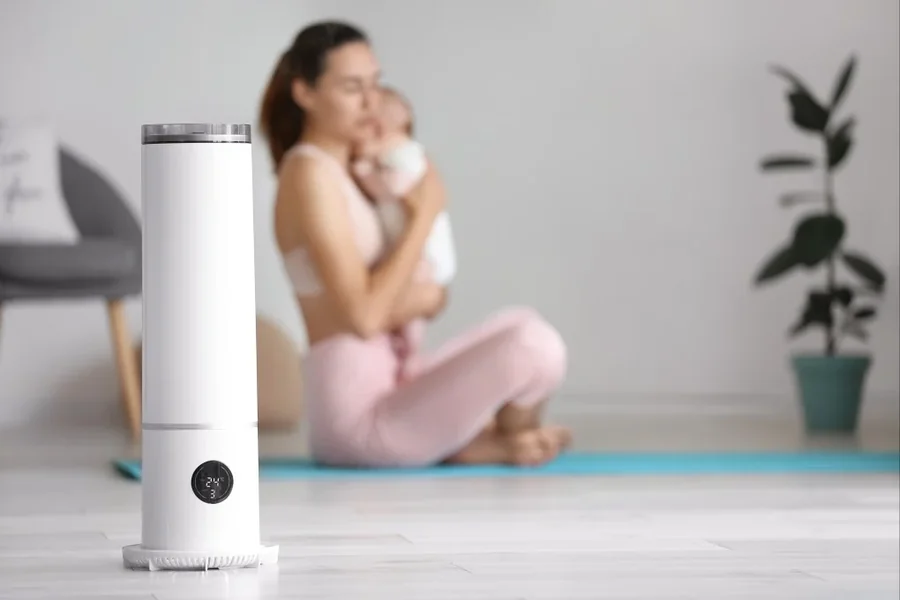While outdoor air pollution is often seen as the biggest health threat, research shows indoor air can be even more polluted. Since we spend 90% of our time indoors, understanding the differences between indoor and outdoor pollution is crucial. Both pose health risks but come from different sources and require unique solutions to manage.
What Is Indoor Air Pollution?
Indoor air pollution refers to contamination within enclosed spaces such as homes, offices, schools, and other buildings. Unlike outdoor pollution, which can disperse across vast areas, indoor pollutants become trapped and often reach concentrations two to five times higher than outdoor levels.
Common indoor air pollutants include volatile organic compounds (VOCs) from cleaning products and furniture, particulate matter from cooking and candles, biological contaminants like mold and dust mites, and gases such as radon and carbon monoxide. Poor ventilation systems compound these problems by preventing fresh air circulation and allowing pollutants to accumulate.
The Environmental Protection Agency consistently ranks indoor air quality among the top five environmental health risks. This ranking stems from both the high concentration of pollutants indoors and the amount of time people spend in these environments.
Understanding Outdoor Air Pollution
Outdoor air pollution consists of harmful substances released into the atmosphere from various sources. Vehicle emissions contribute nitrogen oxides and particulate matter, while industrial facilities release sulfur dioxide, heavy metals, and chemical compounds. Natural sources like wildfires, dust storms, and volcanic activity also contribute to outdoor air contamination.
Urban areas typically experience higher outdoor pollution levels due to dense traffic, industrial activity, and reduced vegetation. However, rural areas face unique challenges from agricultural practices, including pesticide application and livestock operations that release ammonia and methane.
Weather conditions significantly influence outdoor air quality. Temperature inversions can trap pollutants close to the ground, while wind patterns determine how contaminants disperse. Seasonal variations also play a role, with winter months often showing increased pollution from heating systems and reduced atmospheric mixing.
Comparing Health Impacts
Both indoor and outdoor air pollution cause serious health problems, but their effects manifest differently. Short-term exposure to indoor pollutants commonly triggers headaches, eye irritation, fatigue, and respiratory symptoms. Outdoor pollution exposure often results in immediate breathing difficulties, especially for individuals with asthma or other respiratory conditions.
Long-term health consequences prove more severe for both environments. Chronic exposure to indoor pollutants increases risks of respiratory diseases, cardiovascular problems, and certain cancers. Radon exposure, primarily an indoor concern, represents the second leading cause of lung cancer after smoking.
Outdoor air pollution contributes to heart disease, stroke, lung cancer, and chronic respiratory conditions. Fine particulate matter (PM2.5) poses particular dangers because these tiny particles penetrate deep into lung tissue and enter the bloodstream. The World Health Organization estimates outdoor air pollution causes approximately 7 million premature deaths annually worldwide.
Vulnerable populations, including children, elderly individuals, and people with pre-existing health conditions, face heightened risks from both pollution types. Children are especially susceptible to indoor pollutants due to their developing respiratory systems and higher breathing rates relative to body weight.
Sources and Causes
Indoor pollution sources vary significantly from outdoor ones, requiring different identification and mitigation strategies. Inside buildings, everyday activities create substantial contamination. Cooking releases particulate matter and nitrogen dioxide, especially when using gas stoves. Cleaning products emit VOCs that can persist for hours or days. Building materials and furnishings continuously off-gas chemicals, particularly when new.
Biological sources present unique indoor challenges. Dust mites thrive in bedding and upholstery, while mold grows in damp areas like bathrooms and basements. Pet dander circulates through ventilation systems, and inadequate maintenance allows bacteria and viruses to proliferate.
Outdoor pollution originates primarily from human activities and natural phenomena. Transportation accounts for the largest share of urban air pollution, with cars, trucks, and buses releasing exhaust containing hundreds of chemical compounds. Industrial facilities contribute through manufacturing processes, power generation, and waste disposal.
Agricultural activities impact outdoor air quality through pesticide application, fertilizer use, and livestock operations. Construction sites generate dust and particulate matter, while residential heating and cooling systems add to the overall pollution load.
Control and Prevention Strategies
Managing indoor air quality requires active intervention since natural ventilation often proves insufficient. Improving ventilation represents the most effective strategy, whether through mechanical systems or simply opening windows when outdoor air quality permits. Air purifiers with HEPA filters can remove particulate matter and some gases, though they work best in conjunction with source control.
Source reduction offers the most direct approach to indoor pollution control. Choosing low-VOC paints and furnishings, using natural cleaning products, and maintaining humidity levels between 30-50% prevent many pollution problems from developing. Regular HVAC maintenance ensures systems filter air effectively rather than circulating contaminants.
Outdoor air pollution control requires broader societal efforts, though individuals can take protective measures. Monitoring air quality indices helps people plan outdoor activities for times when pollution levels are lower. During high pollution days, staying indoors with windows closed and using air conditioning with clean filters provides protection.
Community-level solutions include supporting public transportation, advocating for stricter emissions standards, and promoting urban planning that reduces traffic congestion. Environmental consulting services can play a key role in designing and implementing these strategies effectively. Planting trees and supporting green spaces helps filter outdoor air naturally while providing other environmental benefits.
Conclusion
Now that you have learned about the different types of air pollution and their sources, as well as the impacts they have on human health and the environment, it is clear that we need to take action to reduce air pollution. While individuals can make small changes in their daily habits, such as driving less or using public transportation, larger community-level solutions are also necessary.

